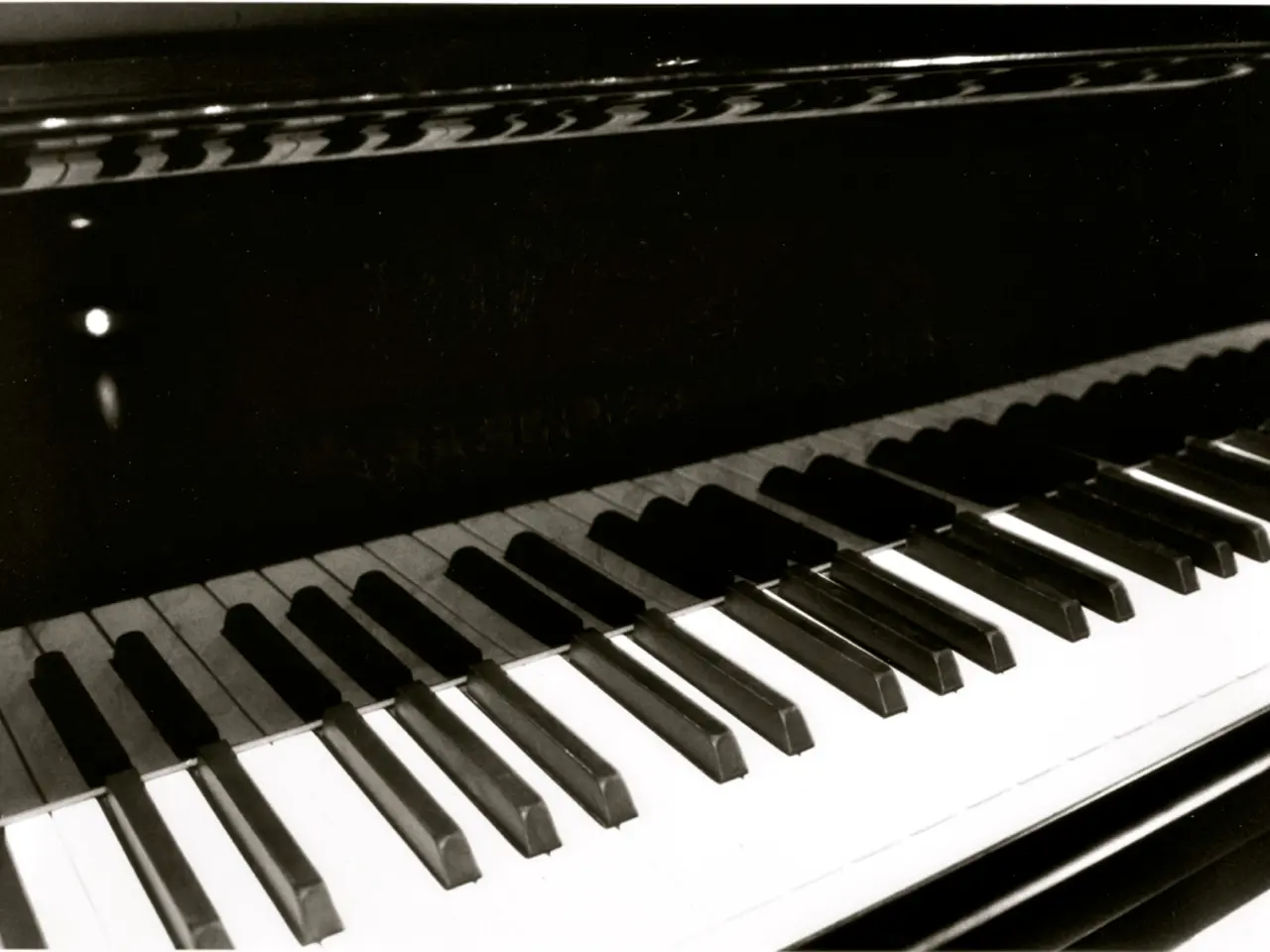Guidelines for Producing Studio-Grade Digital Piano Recordings
In the world of digital music, capturing the pristine sound of your digital piano is essential. Here's a step-by-step guide to help you achieve clean, professional audio recordings.
Creating an Ideal Recording Space
Start by selecting a room with minimal natural reverberation. A room distant from external noise sources, like windows facing streets, is ideal. To further minimize unwanted noise, keep your recording space free from electronic devices that hum or emit interference. Creating an ideal recording space also involves managing the acoustics of your room, which can be achieved by using thick rugs or carpets on the floor to minimize sound bounce, and adding acoustic panels or foam on walls to absorb sound reflections.
Choosing the Right Cables
The recommended cables and audio settings for recording a digital piano to a computer typically involve using an audio interface with balanced cables, connected directly to the computer via USB. Use balanced TRS (Tip-Ring-Sleeve) cables or XLR cables for connecting your digital piano or audio interface to studio monitors or mixers to reduce electrical interference and ensure clean sound. Connect the digital piano’s audio output (often 1/4" TRS) to the audio interface inputs via balanced TRS cables. If your piano only has unbalanced outputs, use the appropriate cable, but balanced is generally preferred.
Setting Up Your Audio Interface and Computer
Connect your audio interface directly to a computer USB 2.0 port (avoid USB hubs or USB 3.0 ports that may cause power or connectivity issues). On Windows, install the necessary drivers provided by your audio interface manufacturer; on macOS, most modern audio interfaces are class-compliant and do not need additional drivers. Set the audio interface as the default input and output device in your computer's sound settings or audio preferences to route audio correctly between the piano, interface, and DAW/software. Turn down volume levels on your interface and speakers/monitors before powering on to prevent loud pops or damage.
Software Settings
Use a Digital Audio Workstation (DAW) such as Logic Pro, Ableton Live, or GarageBand to record the piano audio. Ensure the audio interface is selected as the input device in the DAW. Adjust buffer size and latency settings in the DAW for low latency monitoring without glitches. For digital piano models with MIDI output, you can also connect via USB or using MIDI cables through a MIDI/audio interface to control virtual instruments.
Recording and Organizing Your Tracks
Recording via USB is straightforward by connecting your digital piano to your computer using a USB cable and opening your chosen DAW software to select the digital piano as the input source. Managing multiple audio tracks can become overwhelming, so consider creating folders for each project and subfolders for different versions or takes. Regularly monitor sound through headphones to catch any issues, and for a clear recording, maintain the correct distance for microphones if you're not using a direct connection, adjust levels to avoid distortion, position mics carefully to ensure balanced sound capture, and experiment with different angles for the best audio quality.
Sharing and Backing Up Your Files
When sharing audio files, consider the format - MIDI files are smaller and easier to share for further editing. Regular backups guard against accidental loss of audio files. Choose a reliable cloud storage service to back up your files.
By following these recommendations, you will achieve clean, professional audio recordings of your digital piano with minimal latency and interference. Happy recording!
- When capturing the pristine sound of your digital piano, select a room with minimal natural reverberation to ensure high-quality recordings.
- To achieve clean audio, use balanced TRS or XLR cables for connecting your digital piano to an audio interface or studio monitors, reducing electrical interference.
- In the world of digital music production, employ an audio interface and recording software like Logic Pro, Ableton Live, or GarageBand for professional recordings.
- To connect your digital piano to your computer, use balanced TRS or XLR cables with an audio interface via a USB port, while managing room acoustics by using carpets and acoustic panels.
- For optimal results, set your audio interface as the default input and output device in your computer's sound settings, and adjust buffer size and latency settings in the DAW for low latency monitoring.
- To record your music, open your chosen DAW software, connect your digital piano to your computer with a USB cable, and manage multiple audio tracks by creating folders and subfolders for organization.
- In the case of digital piano models with MIDI output, you can connect via USB or MIDI cables through a MIDI/audio interface to control virtual instruments.
- By following these guidelines, you'll be able to share and backup your incredible home recordings using popular file formats like MIDI and reliable cloud storage services, ensuring longevity for your creations in the realm of music technology and entertainment.




